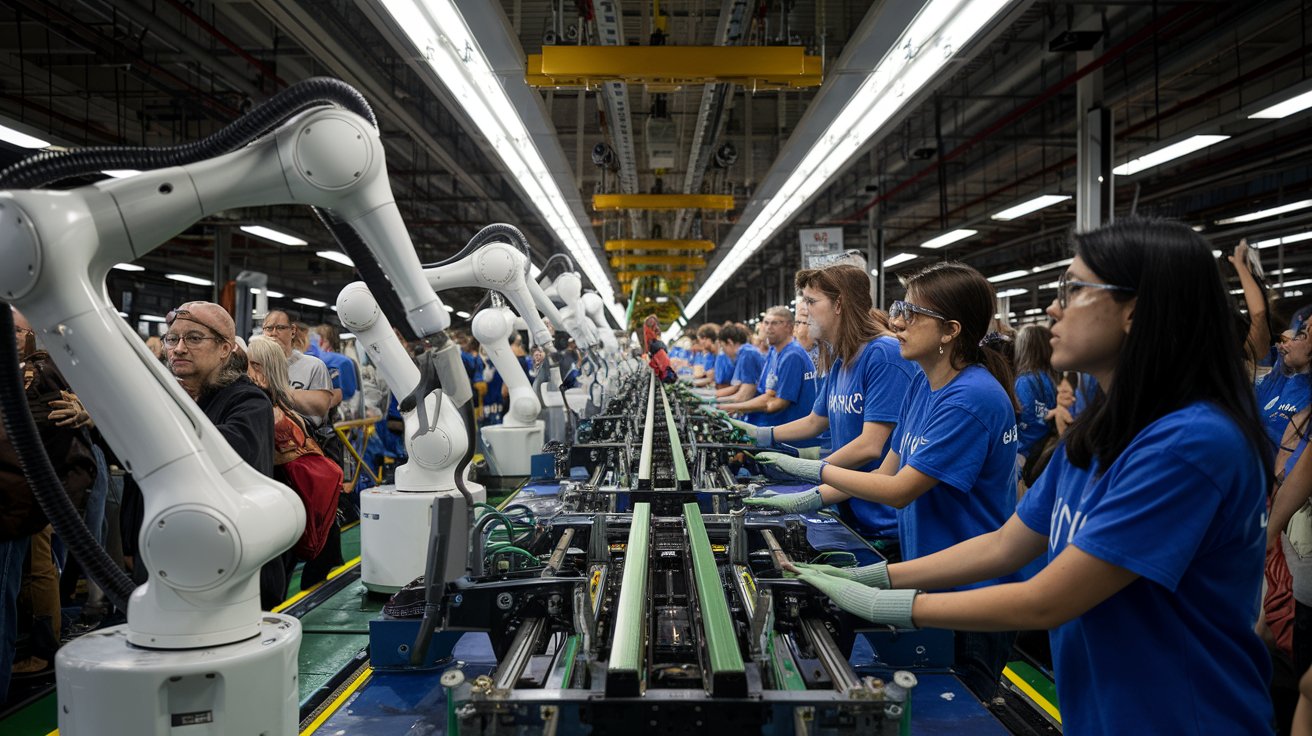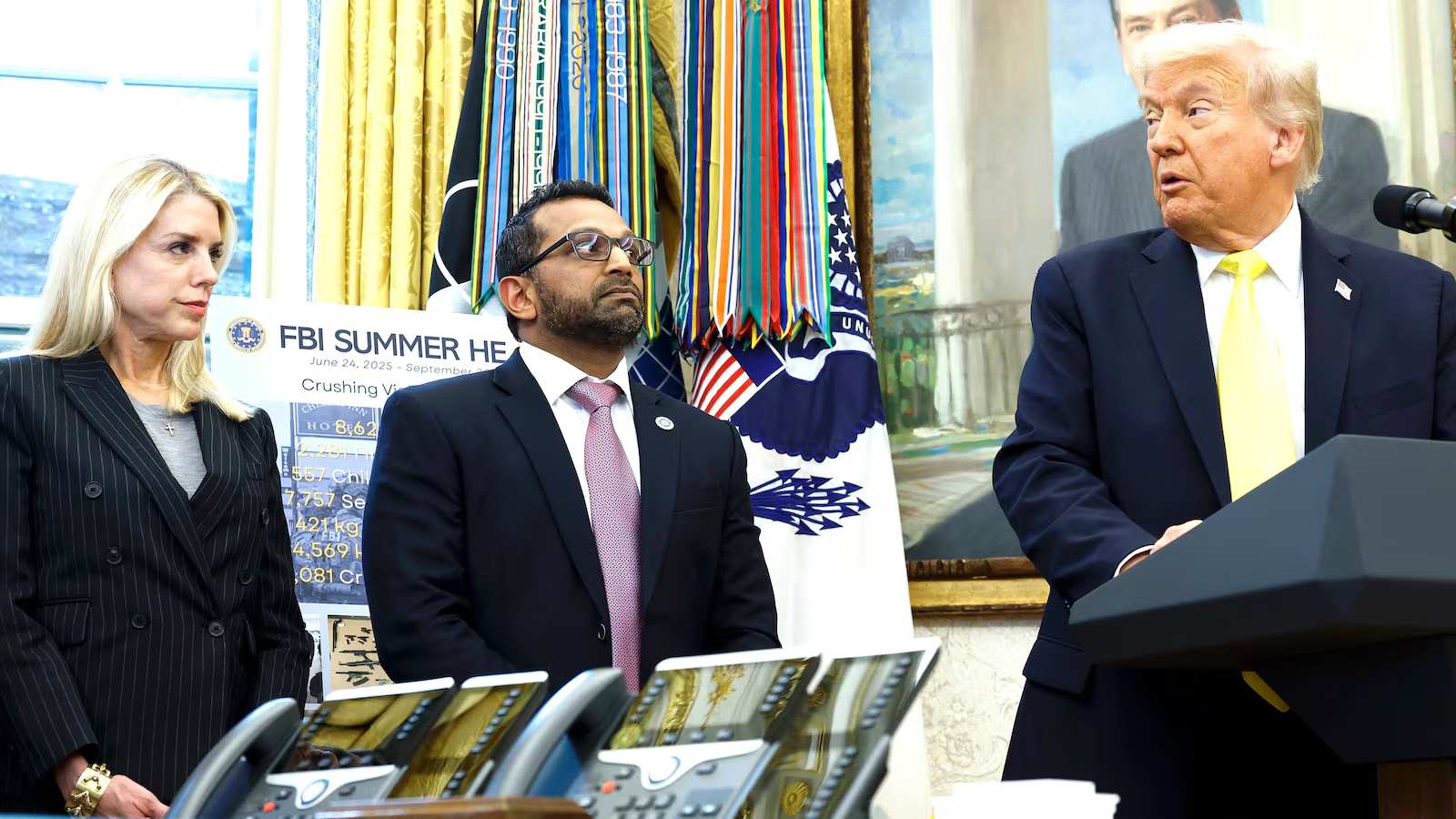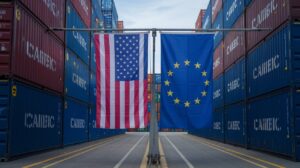Tech Giants Slash Jobs: How AI and Automation Are Reshaping the U.S. Workforce in 2024
AI and Automation Drive Mass Layoffs in 2024; The year 2024 has been a turning point for the tech industry, as major corporations like Google, Microsoft, Amazon, and Tesla have announced mass layoffs. The primary reason? A rapid shift toward artificial intelligence (AI) and automation, leading to structural changes in the workforce.
With over 130,000 tech jobs cut across 457 companies in just a few months, the impact of AI-driven job displacement is now more evident than ever. But is this a sign of declining job opportunities, or are we entering a new phase where AI reshapes employment in a different way?
Table of Contents
The Surge of AI and Automation in Tech
AI is no longer just a futuristic concept—it is actively replacing traditional jobs, streamlining operations, and boosting efficiency across industries. Several leading companies have restructured their workforce to integrate AI-based solutions, reducing reliance on human labor for repetitive or analytical tasks.
Here are some key highlights from 2024’s biggest tech layoffs:
- Google introduced a voluntary exit program for its Platforms and Devices team as part of its AI-focused strategy.
- Amazon restructured its logistics and customer service operations, replacing thousands of roles with AI-driven chatbots and automation systems.
- Microsoft downsized its software engineering teams to prioritize AI-driven development, particularly in Azure cloud computing.
- Tesla automated its production lines even further, reducing the need for human workers in car manufacturing.
The U.S. Bureau of Labor Statistics reports that automation could replace up to 30% of jobs that involve repetitive and data-based tasks by 2030.
How AI is Changing the U.S. Workforce
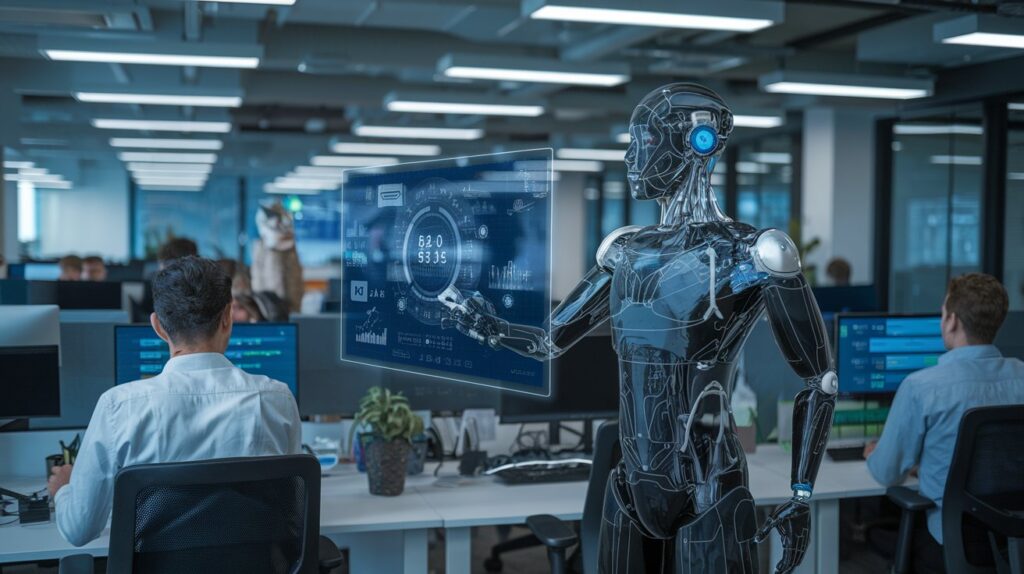
Job Displacement vs. Job Creation
While AI has undoubtedly led to layoffs, it is also creating new job opportunities in fields that require human expertise, such as:
- AI ethics and regulation
- Machine learning engineering
- Data analysis and cybersecurity
- AI-driven customer experience management
- AI prompt engineering, a rapidly growing sector
A recent study by Brookings Institution found that over 30% of U.S. workers could see their tasks significantly altered due to generative AI technologies.
The Future of Work: Adapting to the AI Revolution
1. Workforce Upskilling Initiatives
As AI continues to dominate industries, many tech companies are investing in reskilling programs to help employees transition to AI-integrated job roles. For example:
- Infosys launched an internal AI learning platform to train employees on generative AI and machine learning.
- IBM committed to reskilling 30 million workers globally by 2030, focusing on AI-based skill development.
2. The Role of Government and Policymakers
With mass layoffs affecting the workforce, government intervention is crucial. Policies that support AI-driven economic transitions—such as tax incentives for reskilling programs and workforce development grants—are essential to ensuring a balanced job market.
3. The Human-AI Collaboration Model
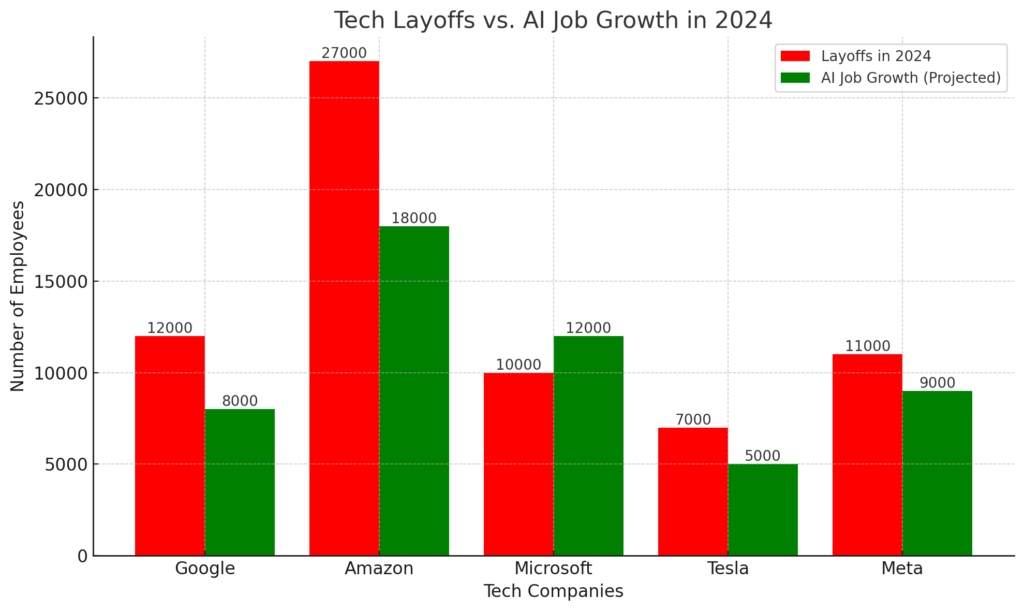
Despite automation, human workers remain indispensable for:
- Decision-making and critical thinking
- Creative problem-solving
- Emotional intelligence in customer service and HR
- Ethical AI development to prevent biased algorithms
The most successful businesses will be those that balance AI efficiency with human expertise, rather than replacing workers outright.
Conclusion: The Path Forward
The U.S. workforce is undeniably evolving, and while AI-driven layoffs pose challenges, they also present opportunities for growth and innovation. The key lies in adapting to these changes by investing in skills that complement AI rather than compete with it.
Key Takeaways:
- AI and automation have led to mass layoffs, but they are also creating new job opportunities.
- Reskilling and workforce development programs are essential for adapting to AI-driven changes.
- The future of work will be AI-human collaboration, not complete job elimination.
As the AI revolution continues, businesses, employees, and policymakers must work together to build a future-proof workforce that thrives in an AI-powered economy. [USnewsSphere.com]


